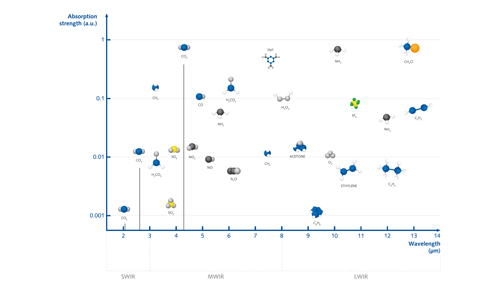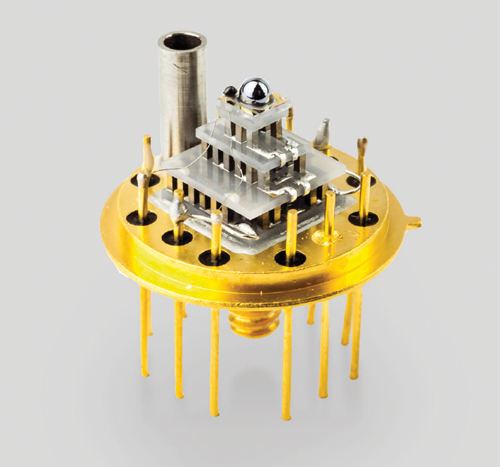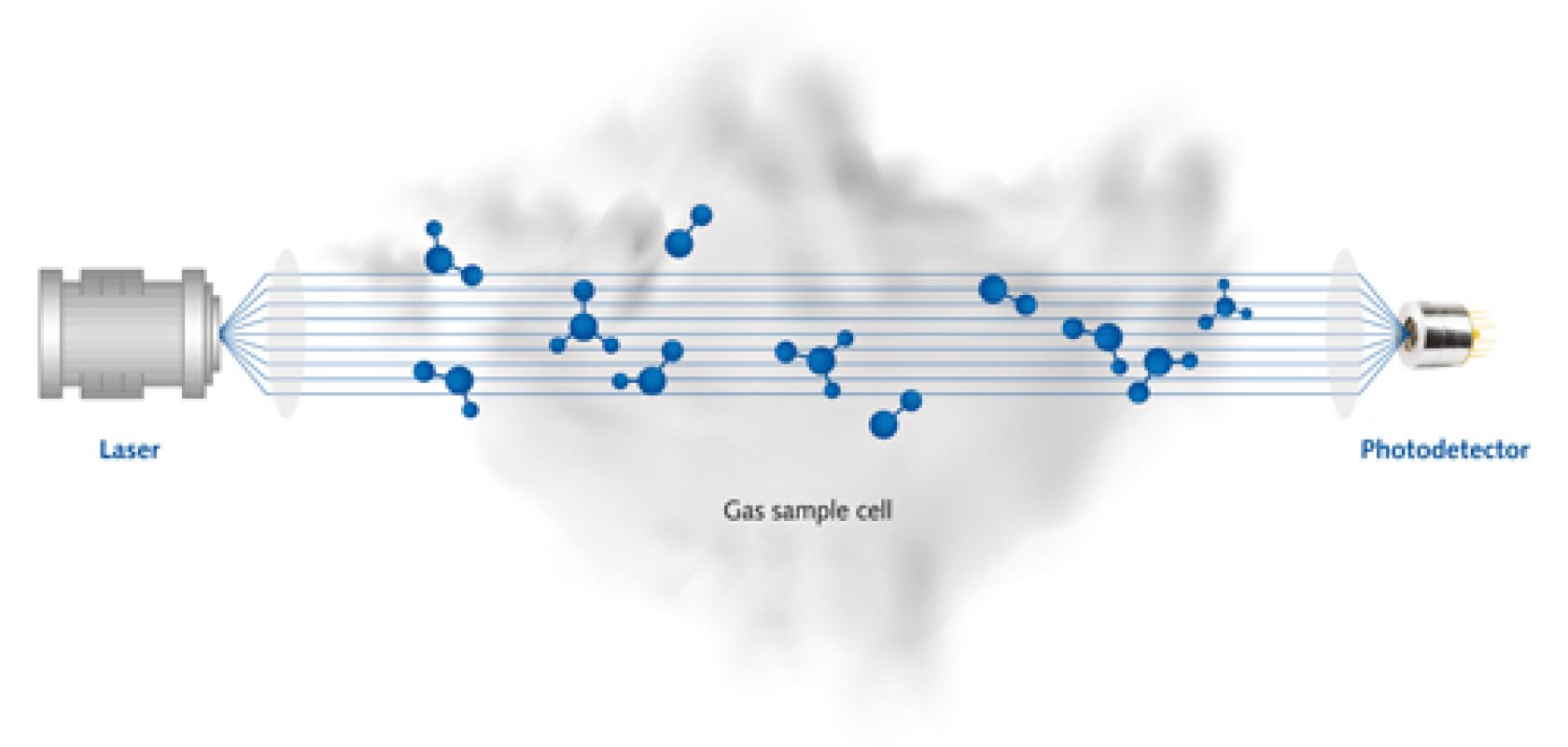Vigo System is helping advance gas analysis and sensing tools for a wide range of applications. Gemma Church investigates
Spectroscopy is an established tool in gas analysis and sensing, helping with everything from environmental monitoring to emissions control, and boosting the efficiency of industrial processes.
A multitude of spectroscopic techniques now exists, depending on the industry and application in question. They are also increasingly implemented on a mass scale, with a thorough understanding of today’s spectroscopy techniques enabling the development of modern, cost-effective and efficient gas analysis solutions.
In its latest white paper, Vigo System examines the most prominent laser spectroscopic techniques, examining how to choose the best detector for your laser gas analysis system.
Jędrzej Mijas, an application engineer at Vigo System, explained: ‘We are constantly developing new detector components and subsystems for gas analysis and sensing applications, as well as numerous other solutions where mid-infrared detection is required. Each solution is tailored to match the exact needs of the individual customer and their application area. This white paper shares our expertise in the area of spectroscopic techniques used in gas analysis and sensing.’
Vigo System has more than 30 years of experience supplying components and solutions, specialising in the development of mid-infrared detection modules and systems. The company even has six of its detectors on Mars.
While a range of spectroscopy techniques exist for the analysis and sensing of gases, Tunable Diode Laser Spectroscopy (TDLS) is one of the most widespread techniques – and this is the focus of the paper. Mijas said: ‘The most important advantage of this technique is the extremely low limits of detection. Plus, it is a relatively simple system to set up and use, and the fast tunable lasers and fast-response photodetectors allow for real-time operation.’
However, there are still several important considerations when setting up a TDLS system for a specific application. For example, the white paper reveals how to increase the optical path through the absorbing sample and optimise the modulation to the light source. These factors can help optimise your laser gas analysis system for its intended application and, given the diversity of potential applications, this is no easy undertaking where custom-fit solutions are often required.

Comparison of absorption lines’ strength for different wavelength regimes
Custom-fit solutions
The gas analysis market shows no signs of slowing down, with demand now increasing at a rapid rate due to a range of factors. As such, there is now an inherent need for affordable, sensitive and diverse gas analysis systems and many OEMs rely on custom-fit solutions, which have the flexibility to meet their diverse and demanding requirements across many industries.
Vigo System manufactures a range of detectors and detector components across several cross-industry use cases. Environmental protection is a leading and growing application area, for example, where the monitoring of gas and aerosol levels in the atmosphere is increasingly important in the face of climate change.
Environmental detection techniques are evolving, where measurements are now not only taken by simple ground-based setups, but also in advanced airborne systems or in extreme conditions, for example, to monitor volcanic processes.
Many gas analysis and sensing systems are used in industry to not only reduce emissions, but also optimise various processes using real-time detection techniques. This is important for the benefit of the environment, and also to guarantee workplace safety.
The automotive sector is also increasingly interested in gas analysis, where exhaust fume control is now a key design consideration, with real-time monitoring devices increasingly fitted to vehicles.
The medical industry is another growing application area in gas analysis and sensing. Mijas explained: ‘Some trace gases on a patient’s breath could indicate the presence of certain diseases, and our devices enable detection of such specific biomarkers.’
These exhaled air analysis systems can, for example, determine tumour marker levels or diagnose asthma or certain liver conditions. Such devices can be used also for monitoring the composition of air in operating rooms. In addition, detectors supplied by Vigo System are used to control the power and positioning of laser beams used by surgeons, dentists or dermatologists.
When developing these detection components and systems, a wide range of challenges has emerged which must also be addressed. Compact and robust detection systems are important to allow for precise in situ measurements, across a range of conditions.
Power consumption and cost are two more considerations when designing and developing gas analysis and sensing systems. Compliance is another challenge, where directives such as the RoHS (restriction of hazardous substances) requires any electrical and electronic devices to control the level of toxic substances present.
But cheap, fast and non-invasive diagnosis tools such as spectroscopic breath analysers using RoHS-compliant detectors, would greatly improve our healthcare possibilities. ‘Everyone hopes for compact and easy-to-use laser spectroscopy systems,’ Mijas added.

One of the photovoltaic detectors available from Vigo System
New detectors
Using its expertise and experience in the manufacture of custom detectors and detection modules, Vigo System is developing two new devices dedicated for use in spectroscopy. These are not (strictly speaking) out-of-the-box solutions but can easily be adapted to fit and work with third-party systems.
The first is a Multiband 4-Element detection module, 4EF-5, which can detect gases such as methane, ethane, carbon dioxide, nitrous oxide and carbon monoxide. It can also be used for flame and fire detection, combustion process control, explosives detection and exhaust fumes analysis.
‘This detection module is fitted with filters specifically for the detection of the most popular gases, in terms of pollution monitoring. It is also easy to integrate the detection module into an external system. So, it is easily adaptable for customers to use in their systems,’ Mijas explained.
The second is a miniature spectrophotometer to detect and analyse specific gases. Such a device could be used across a range of applications, including the detection of biomarkers on a patient’s breath. Both systems are capable of detecting a range of gaseous compounds, which is a huge advantage considering the power consumption, cost and miniaturisation demands of the industry.
Mijas said: ‘Usually one detector with a filter can only detect one specific gas. Now there is a huge pressure to analyse several gases at once. This is where the miniature spectrophotometer and Multiband 4-Element detection module 4EF-5 could help.’
Additionally, Vigo System is addressing fringing, one of the returning issues in laser spectroscopy, by introducing dedicated anti-fringing solutions, which are available in its standard Vigo System detectors.
As the demand for increasingly innovative gas analysis and sensing systems continues to grow, this is an interesting – and savvy – step forward for Vigo System.
Mijas said: ‘The gas analysis industry is booming now and we want to supply the best detector systems and components for each application area.’
For more information on this topic and to download a White Paper click here.


